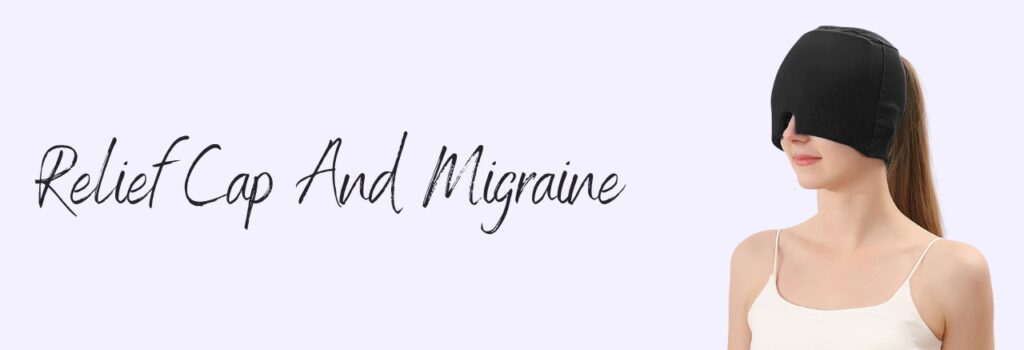What is a relief cap?
Headaches are a common problem for many people, and finding relief can be difficult. There are many treatments available, from over-the-counter pain medications to prescription drugs, but some people prefer natural remedies. One such remedy is the headache relief cap.
The headache relief cap is a simple device designed to provide relief from headaches and migraines. It works by applying pressure to specific points on the head, which can help to relieve tension and reduce pain. The cap is made from a soft, flexible material and is typically filled with gel or other materials to provide added comfort.
To use the headache relief cap, you simply place it on your head and adjust it to fit snugly. The cap will apply pressure to key pressure points on the head, including the temples, forehead, and back of the neck. This can help to ease tension and reduce pain.
While the headache relief cap may not work for everyone, many people find it to be an effective and natural way to relieve headache pain. It can be used in conjunction with other treatments, such as pain medication or relaxation techniques, to provide even greater relief.

If you’re looking for a natural way to relieve headache pain, the headache relief cap may be worth a try. Be sure to talk to your healthcare provider before trying any new treatments, especially if you have a history of migraines or other types of headaches. They can help you determine if the headache relief cap is right for you and provide guidance on how to use it safely and effectively.
Sure, here’s some additional information about headache relief caps:
Headache relief caps are often marketed as a drug-free alternative to pain medication. They can be used for various types of headaches, including tension headaches, migraines, and sinus headaches. Some people also use them to alleviate stress and promote relaxation.
In addition to applying pressure to key pressure points on the head, headache relief caps may also provide other benefits. For example, the cooling gel or other materials inside the cap may help to soothe the skin and reduce inflammation. Some caps may also be infused with aromatherapy scents, such as lavender or peppermint, which can have a calming effect on the body.
When using a headache relief cap, it’s important to follow the instructions carefully. The cap should be adjusted to fit snugly, but not too tight, on the head. It should not be worn for extended periods of time, as this can cause discomfort or even exacerbate headache symptoms.
While headache relief caps are generally considered safe, there are some potential risks to be aware of. For example, if the cap is too tight, it could restrict blood flow and cause discomfort or headaches. Additionally, if you have a history of neck or head injuries, you should consult with your healthcare provider before using a headache relief cap.
Overall, headache relief caps can be a helpful tool for managing headache symptoms. However, they should be used in conjunction with other treatments, such as relaxation techniques, hydration, and healthy lifestyle habits. If you experience frequent or severe headaches, be sure to talk to your healthcare provider to rule out any underlying medical conditions and determine the best course of treatment.
Headache relief caps are often marketed as a drug-free alternative to pain medication. They can be used for various types of headaches, including tension headaches, migraines, and sinus headaches. Some people also use them to alleviate stress and promote relaxation.
In addition to applying pressure to key pressure points on the head, headache relief caps may also provide other benefits. For example, the cooling gel or other materials inside the cap may help to soothe the skin and reduce inflammation. Some caps may also be infused with aromatherapy scents, such as lavender or peppermint, which can have a calming effect on the body.
When using a headache relief cap, it’s important to follow the instructions carefully. The cap should be adjusted to fit snugly, but not too tight, on the head. It should not be worn for extended periods of time, as this can cause discomfort or even exacerbate headache symptoms.
While headache relief caps are generally considered safe, there are some potential risks to be aware of. For example, if the cap is too tight, it could restrict blood flow and cause discomfort or headaches. Additionally, if you have a history of neck or head injuries, you should consult with your healthcare provider before using a headache relief cap.
Overall, headache relief caps can be a helpful tool for managing headache symptoms. However, they should be used in conjunction with other treatments, such as relaxation techniques, hydration, and healthy lifestyle habits. If you experience frequent or severe headaches, be sure to talk to your healthcare provider to rule out any underlying medical conditions and determine the best course of treatment.
headache relief caps how they work
Headache relief caps are devices that are designed to provide relief from headaches by cooling and soothing the scalp. They typically consist of a soft, flexible cap that is filled with a cooling gel or other material that can be chilled in the refrigerator or freezer. The cap is placed on the head, covering the forehead and temples, and the cooling sensation can help to ease headache pain and tension.
The theory behind headache relief caps is that the cooling sensation helps to constrict blood vessels in the scalp, reducing inflammation and easing pain. Additionally, the cap can provide a distraction from the pain and help to promote relaxation.
While there is limited scientific research on the effectiveness of headache relief caps, many people report finding them helpful for relieving headache pain. They can be particularly useful for individuals who experience tension headaches or migraines, as these types of headaches often involve tightness and tension in the muscles of the head and neck.
If you are considering using a headache relief cap, it is important to follow the manufacturer’s instructions for use and to use the cap only as directed. Additionally, if you experience frequent or severe headaches, it is important to consult with a healthcare professional to determine the underlying cause of your headaches and to develop an appropriate treatment plan.
Some headache relief caps may contain aromatherapy elements, such as lavender or peppermint, which can also help to soothe headaches.
Headache relief caps can be used in conjunction with other treatments for headaches, such as medication or relaxation techniques.
While headache relief caps can be purchased online or in stores, you can also make your own by filling a soft cap with gel or other cooling materials and placing it in the refrigerator or freezer.
It is important to note that headache relief caps are not a cure for headaches and may not be effective for all types of headaches. If you are experiencing frequent or severe headaches, it is important to seek medical attention to determine the underlying cause and develop an appropriate treatment plan.
Finally, it is important to use headache relief caps safely and to avoid leaving them on for extended periods of time or falling asleep while wearing them, as this can lead to discomfort or injury.

How do you use a migraine relief cap?
Chill the cap: Migraine relief caps are designed to be used cold, so the first step is to chill the cap in the refrigerator or freezer according to the manufacturer’s instructions.
Position the cap: Once the cap is chilled, position it on your head so that it covers your forehead and temples, where many people experience migraine pain. The cap should fit comfortably and snugly without putting too much pressure on your head.
Relax: Allow yourself to relax and breathe deeply while wearing the cap. Some people find it helpful to lie down in a quiet, dark room while using a migraine relief cap.
Follow the manufacturer’s instructions: Be sure to follow the manufacturer’s instructions for use, including how long to wear the cap and how often to use it.
Use in conjunction with other treatments: Migraine relief caps can be used in conjunction with other treatments for migraines, such as medication or relaxation techniques.
Speak with a healthcare professional: If you experience frequent or severe migraines, it is important to speak with a healthcare professional to determine the underlying cause and develop an appropriate treatment plan.
If the migraine relief cap has adjustable straps, adjust them to fit comfortably on your head. Make sure the cap is covering your forehead and temples.
Some migraine relief caps may come with a removable gel pack that can be heated or cooled depending on your preference. Be sure to follow the manufacturer’s instructions carefully if you choose to heat the gel pack.
When using a migraine relief cap, it’s important to try to relax as much as possible. This may involve lying down in a quiet, dark room and focusing on your breathing.
Migraine relief caps can be used multiple times throughout the day, as needed. However, be sure to follow the manufacturer’s instructions for how long to use the cap and how often to use it.
While migraine relief caps can be effective for some people, they may not work for everyone. It’s important to speak with a healthcare professional if you experience frequent or severe migraines.
In addition to using a migraine relief cap, there are other steps you can take to manage migraines, such as getting enough sleep, staying hydrated, and avoiding triggers like certain foods or bright lights.
Overall, using a migraine relief cap can be a helpful way to manage migraine pain, but it’s important to use it safely and in conjunction with other treatments as needed.






